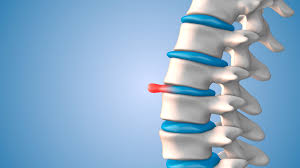When you hear the words “Herniated Disc Treatment in St. Louis”, it’s natural for your mind to jump straight to surgery. Many patients imagine hospital rooms, recovery time, and invasive procedures. But here’s the truth most people don’t hear often enough surgery is rarely the first or only option for treating a herniated disc.
As spine specialists, we see this misconception daily. Patients come in worried they’ll have to undergo an operation, but after evaluation, many find relief through non-surgical methods. The key lies in understanding your condition, your symptoms, and what modern treatment options can do before surgery ever enters the picture.
Let’s break this down clearly and factually, without the medical jargon, so you can make informed decisions about your spine health.
Understanding a Herniated Disc
Your spine is made up of bones (vertebrae) cushioned by discs, soft, gel-like pads that act as shock absorbers. When the outer layer of one of these discs weakens or tears, the inner material can bulge out. This is what we call a herniated or slipped disc.
This bulge can press on nearby nerves, causing symptoms like:
- Pain in the neck or lower back
- Numbness or tingling down the arms or legs
- Weakness in specific muscles
- Pain that worsens when sitting or bending
The severity of these symptoms depends on where the disc has herniated and how much pressure it places on the surrounding nerves.
Why Surgery Isn’t Always Necessary
While a herniated disc can be painful, most cases don’t require surgery. In fact, medical studies show that around 80–90% of patients improve without an operation within several weeks to a few months.
That’s because your body has an incredible ability to heal itself. Over time, inflammation decreases, and the herniated portion of the disc can shrink naturally. With the right treatment plan, pain can be managed, mobility can return, and normal life can resume, without surgery.
So, when do you actually need it? Surgery is typically reserved for cases where:
- Pain persists despite months of conservative care
- There’s significant nerve compression causing muscle weakness or loss of function
- You’re experiencing symptoms of cauda equina syndrome, a rare but serious condition requiring immediate attention (such as loss of bladder/bowel control)
If none of these apply, non-surgical treatments are often the most effective place to start.
Step One: Accurate Diagnosis
Before any treatment begins, getting a precise diagnosis is essential. A herniated disc can mimic other spinal issues like degenerative disc disease or spinal stenosis, so imaging tests (MRI, X-ray, or CT scan) help pinpoint the exact cause of your pain.
An expert spine physician will assess:
- Where your pain starts and radiates
- Your reflexes, strength, and flexibility
- Whether nerve compression is mild, moderate, or severe
This detailed evaluation ensures that your treatment plan targets the actual source of discomfort, not just the symptoms.
Step Two: Conservative (Non-Surgical) Treatments
Here’s where most herniated disc care begins, and for many patients, ends successfully. The goal of conservative treatment is to reduce inflammation, relieve pressure on the nerve, and strengthen supporting muscles so your spine can function normally again.
Let’s explore the most effective approaches your specialist may recommend.
1. Physical Therapy
Physical therapy is the cornerstone of recovery. A trained therapist designs a customized exercise plan to:
- Strengthen the muscles supporting your spine
- Improve flexibility and posture
- Relieve pressure on affected nerves
Therapy typically starts gently, focusing on movement restoration, and gradually progresses to core strengthening and endurance exercises. Over time, this reduces pain and lowers the risk of re-injury.
2. Medications
Depending on your pain level, your doctor may prescribe or recommend:
- NSAIDs (non-steroidal anti-inflammatory drugs) like ibuprofen to reduce inflammation
- Muscle relaxants for spasms
- Short-term corticosteroids (oral or injected) to control acute pain flare-ups
- Nerve pain medications if the herniation affects nerve pathways
These medications don’t “fix” the herniation but help manage pain while your body heals.
3. Epidural Steroid Injections
For persistent pain that doesn’t respond to medication alone, epidural injections may offer relief.
A specialist injects a corticosteroid directly into the epidural space near the affected nerve. This reduces inflammation, often easing pain for several weeks or months.
While not a permanent solution, these injections can give patients the window of relief they need to continue with physical therapy and daily activities.
4. Chiropractic or Manual Therapy
In select cases, gentle spinal manipulation or manual therapy may help relieve discomfort by improving joint mobility and reducing nerve pressure.
However, this should only be done under the supervision of a qualified spine or musculoskeletal expert who has reviewed your imaging results to ensure it’s safe for your specific condition.
5. Lifestyle and Ergonomic Modifications
Healing doesn’t happen only in the clinic, it continues in your everyday habits.
Simple changes can make a major difference:
- Avoid sitting for long periods without movement
- Use ergonomic chairs or lumbar cushions
- Practice correct lifting techniques
- Maintain a healthy weight to reduce stress on the spine
Even small, consistent adjustments can accelerate recovery and prevent future disc problems.
Step Three: Minimally Invasive Treatments
If conservative options haven’t worked after several months, minimally invasive procedures can be the next step before considering full surgery.
These techniques relieve pain by targeting the herniated disc area directly, often with tiny incisions, less downtime, and quicker recovery than traditional surgery.
1. Microdiscectomy (Minimally Invasive)
This procedure removes only the small portion of the disc pressing on the nerve. It’s done through a small incision, usually under local or general anesthesia, and patients often go home the same day.
2. Endoscopic Discectomy
A thin camera and specialized tools are inserted through a micro-incision, allowing surgeons to visualize and remove the herniation precisely. Because it causes minimal tissue disruption, recovery tends to be faster and less painful.
3. Percutaneous Treatments
Some newer procedures use needles or heat-based technology to shrink or seal the damaged disc material. These are often used for smaller herniations with mild nerve compression.
These techniques bridge the gap between conservative care and major surgery, offering relief with minimal impact on your daily life.
When Surgery Becomes the Right Choice
If pain persists despite months of therapy, medications, and injections, or if nerve function worsens, surgery may become necessary. The goal of surgery is simple: relieve pressure on the nerve to prevent permanent damage and restore normal movement.
Modern surgical techniques are far more precise than in the past. Procedures like microdiscectomy or laminectomy are designed to remove only the affected portion of the disc, preserving as much of your spine’s natural structure as possible.
Recovery times vary, but with proper post-operative care and rehabilitation, many patients return to normal activities within weeks.
It’s important to remember that surgery is not a failure of conservative treatment, it’s simply the next step in a structured, evidence-based care plan.
How Specialists Approach Herniated Disc Care
At a reputable spine care center, treatment is tailored, not templated. That means your doctor will evaluate your condition holistically, considering:
- Age and activity level
- Severity and duration of pain
- Nerve involvement
- Lifestyle goals
For example, an athlete might need an aggressive rehabilitation plan, while someone with a desk job may benefit from ergonomic and posture-focused interventions.
The best outcomes happen when patients and providers collaborate closely, tracking progress, adjusting therapy as needed, and making informed decisions at every stage.
The Role of Prevention and Long-Term Care
Once a herniated disc heals, preventing recurrence becomes the priority. Long-term spine health comes down to maintaining strength, mobility, and balance.
Here are key preventive measures experts recommend:
- Core strengthening to stabilize your spine
- Posture awareness, especially during sitting and lifting
- Regular stretching to maintain flexibility
- Healthy weight management to minimize spinal stress
Many people who recover from a herniated disc go on to live active, pain-free lives simply by integrating these practices into their routines.
When to Seek Immediate Medical Help
While most herniated discs improve with conservative care, there are situations that require urgent evaluation:
- Sudden loss of bladder or bowel control
- Severe, progressive weakness in your legs
- Numbness in the groin or inner thighs
These symptoms may indicate serious nerve involvement and need immediate attention.
Expert Advice in Perspective
The fear of surgery often overshadows the reality of modern spine care. Most patients find relief through non-surgical or minimally invasive options, provided they seek timely, professional evaluation.
Every herniated disc is different, and so is every treatment plan. With expert guidance, what feels like a painful setback today can become a manageable, fully recoverable condition.
Conclusion
No, surgery is not your only option for a herniated disc. For most patients, personalized care, physical therapy, and targeted pain management lead to lasting relief, without the need for invasive procedures. And when surgery is necessary, minimally invasive techniques have made recovery safer and faster than ever.
If you’re seeking comprehensive spine care that prioritizes your comfort, function, and long-term health, specialized experts in Herniated Disc treatment in St. Louis can guide you toward the right solution, so you can move freely, confidently, and pain-free again.


